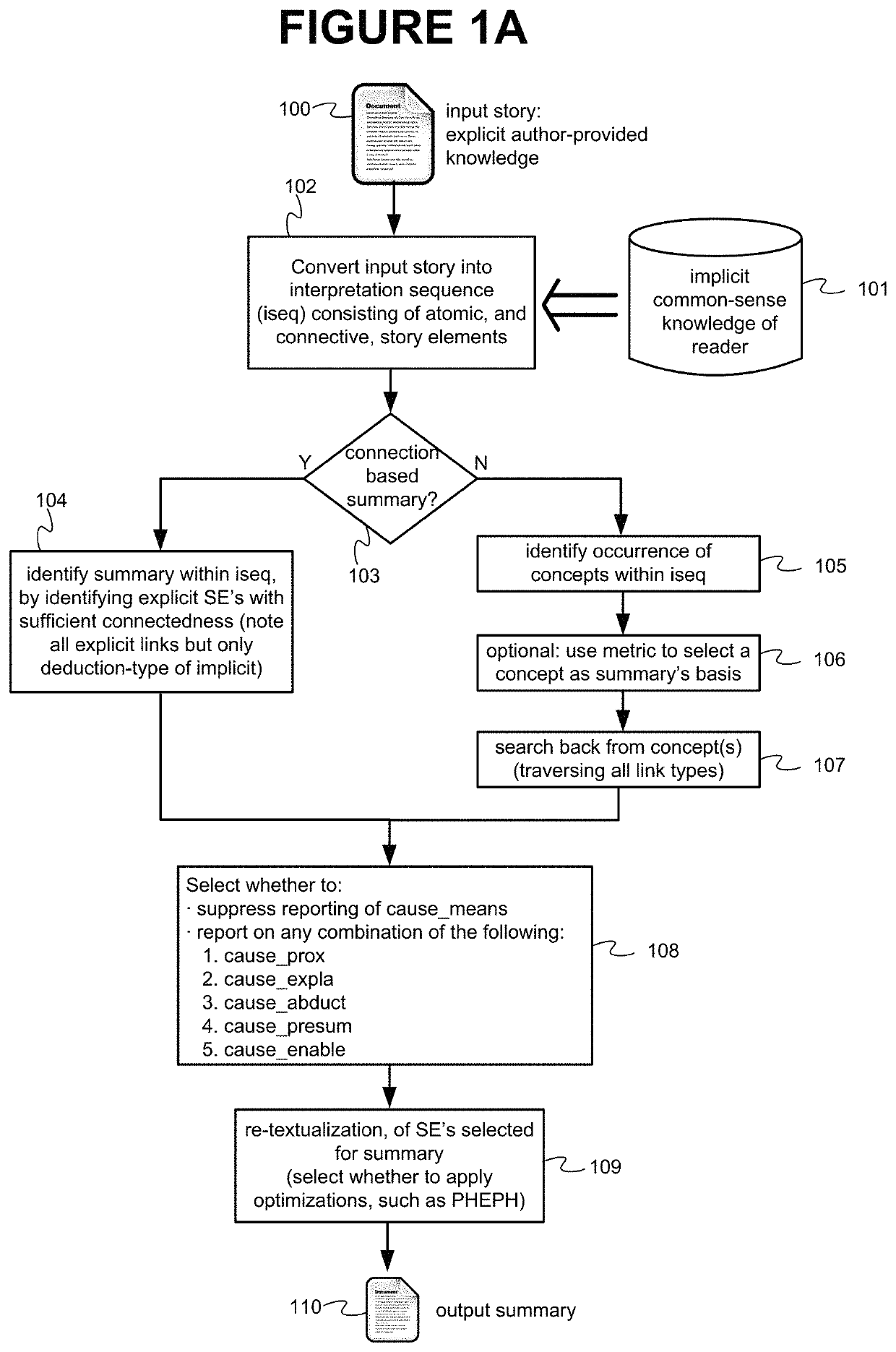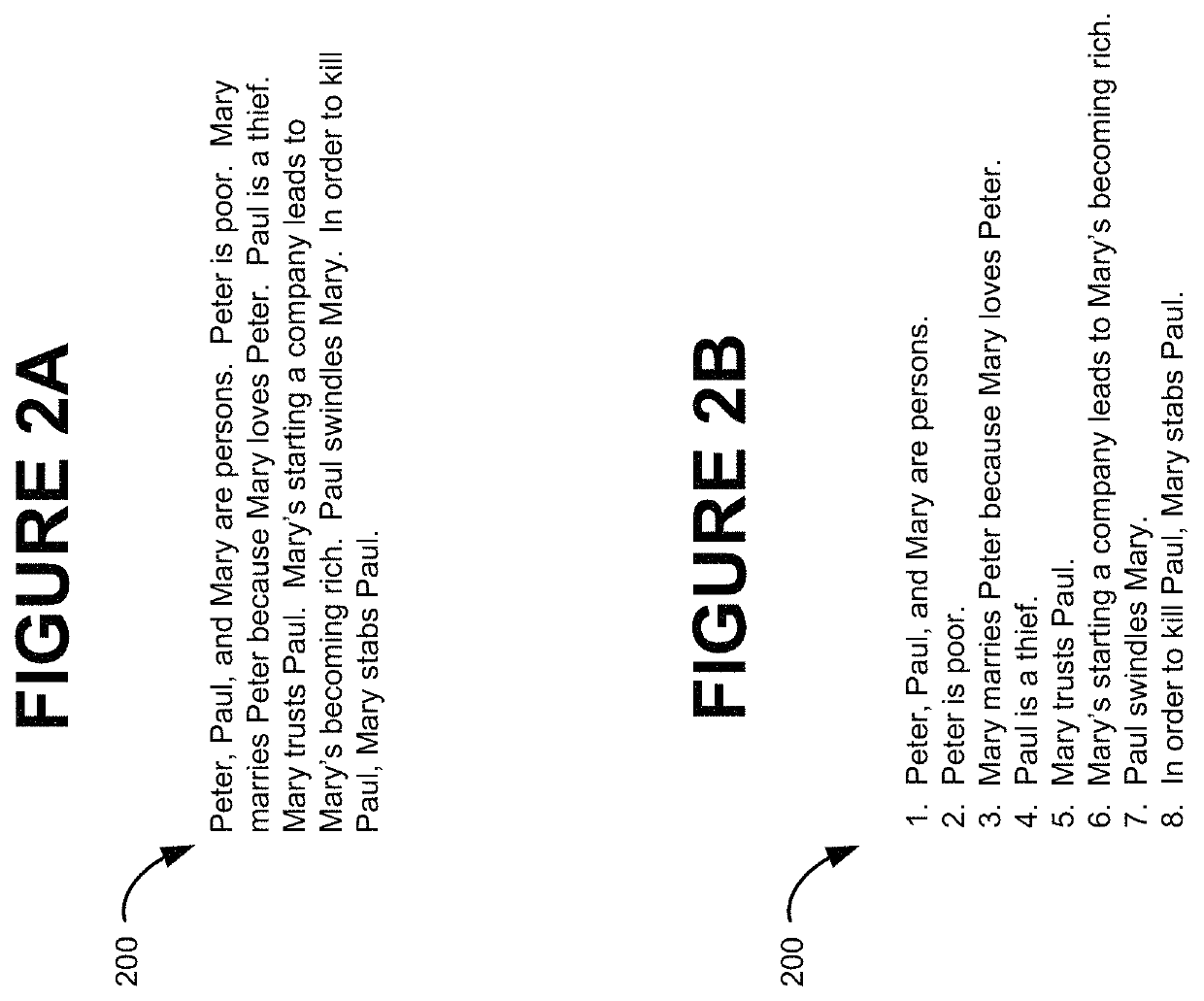Method and apparatus for summarization of natural language
a natural language and summarization technology, applied in the field of natural language processing, can solve the problems of non-human primates, not believed to be capable of creating or understanding stories, and the task of summarizing can seem extremely complex, and, quite likely, beyond the capacity of current computing technology
- Summary
- Abstract
- Description
- Claims
- Application Information
AI Technical Summary
Benefits of technology
Problems solved by technology
Method used
Image
Examples
Embodiment Construction
[0056]Reference will now be made in detail to various embodiments of the invention, examples of which are illustrated in the accompanying drawings. Wherever possible, the same reference numbers will be used throughout the drawings to refer to the same or like parts.
[0057]Table of Contents to Detailed Description
1 Introduction
Interpretation Sequence
[0058]2.1 Directed Graph Representation[0059]2.1.1 Explicitly Expressed Causation[0060]2.1.1.1 Direct causation[0061]2.1.1.2 Indirect causation[0062]2.1.1.3 Means (or “Instrumentality”) causation[0063]2.1.1.4 Story Element Labeling[0064]2.1.2 Implicitly Expressed Causation[0065]2.1.2.1 Deductive causation[0066]2.1.2.2 Explanatory causation[0067]2.1.2.3 Proximity causation[0068]2.1.2.4 Abductive causation[0069]2.1.2.5 Presumptive causation[0070]2.1.2.6 Enabling causation[0071]2.1.3 Prioritization[0072]2.1.4 Censor Rules and Entity Rules
[0073]2.2 Parentheses-based representation[0074]2.2.1 Introduction[0075]2.2.2 Representing Explicit Story ...
PUM
 Login to View More
Login to View More Abstract
Description
Claims
Application Information
 Login to View More
Login to View More - R&D
- Intellectual Property
- Life Sciences
- Materials
- Tech Scout
- Unparalleled Data Quality
- Higher Quality Content
- 60% Fewer Hallucinations
Browse by: Latest US Patents, China's latest patents, Technical Efficacy Thesaurus, Application Domain, Technology Topic, Popular Technical Reports.
© 2025 PatSnap. All rights reserved.Legal|Privacy policy|Modern Slavery Act Transparency Statement|Sitemap|About US| Contact US: help@patsnap.com



